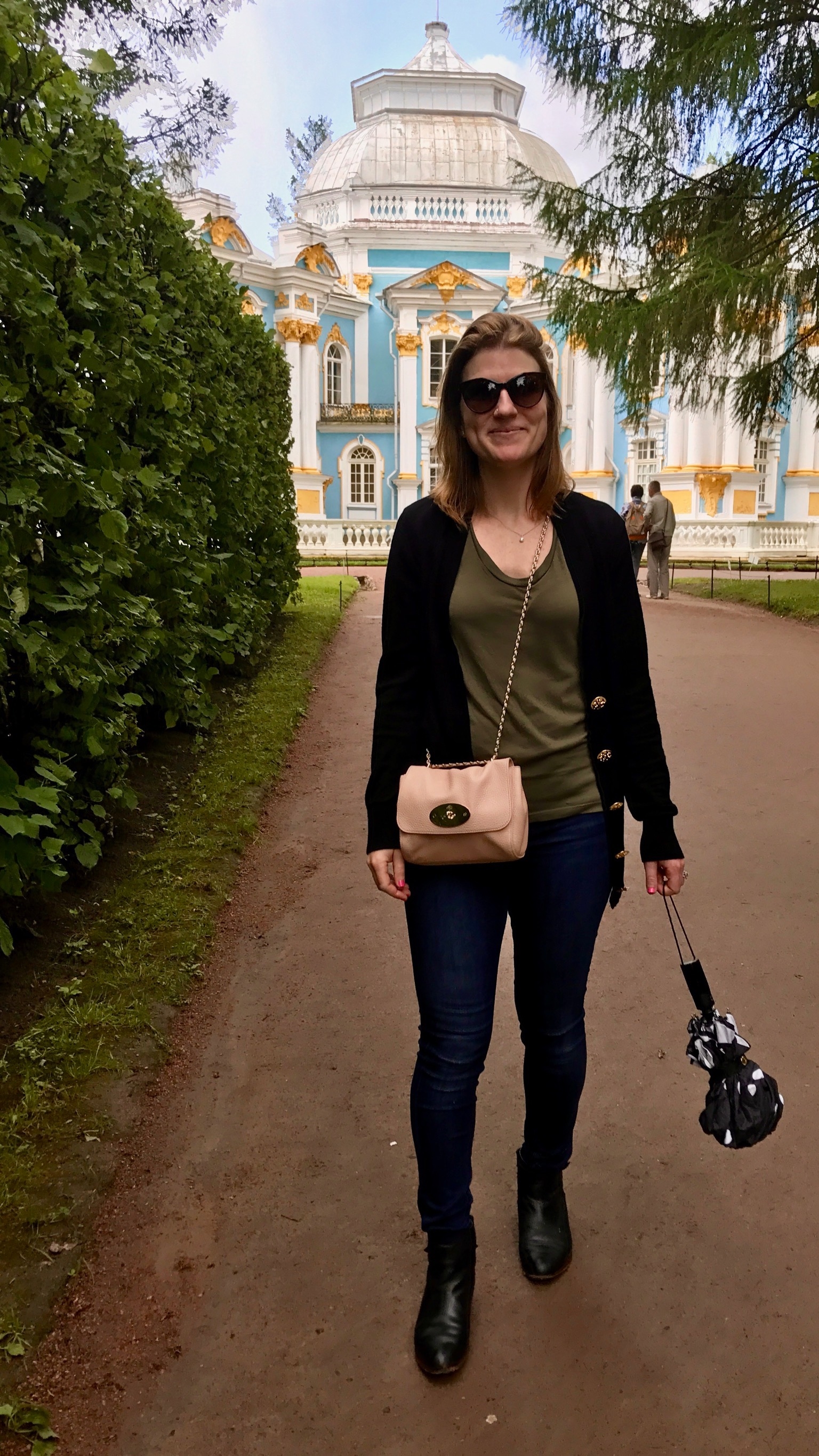Trip of a Lifetime Part 2: The Canadian Arctic
I keep telling people that the week my mom and I spent at Arctic Watch may have been our favorite trip of all time. I think part of the reason is that it caught me so by surprise. I honestly didn’t know you could actually go there, much less how you would do it.
What made it so special? I think it was a combination of the vast, barren natural beauty of the landscape; jaw dropping wildlife sightings; incredible people who are polar experts and delight in sharing their favorite place on earth with visitors; more creature comforts than you deserve at that latitude but not enough to feel too guilty about it; the ability to truly disconnect from the outside world and be present in the series of unique moments you experience; and being presented with countless opportunities to say yes to adventure.
We decided expedition parkas must be yellow so that the guides can keep track of the hapless tourists.
This is a musk ox. We met his live brethren later in the week!
As I explained in Part 1, we added a stopover in Calgary for the Stampede to our itinerary before meeting up with the tour group in Yellowknife. The night before we left, we were given our expedition parkas (included in the trip fee) and our Muck boots (a loan for the duration of the trip). You’ll see us wearing those boots in every picture for a reason: they are waterproof, warm, and extremely comfortable. I hiked all day in those suckers and had nary a hot spot.
Sea ice on Somerset Island
On the runway at Arctic Watch
Bright and early in the morning, we loaded onto a bus to the airport, where we boarded a charter flight on a Dash 8 plane. The pilot pointed out when we crossed the Arctic Circle – which, by the way, was before our halfway point refueling spot. Arctic Watch is on Somerset Island along the Northwest Passage, and as we landed on a dirt runway with only some all terrain vehicles and a wind sock to be seen, it truly felt like the end of the earth.
Arctic Watch as seen from the runway
Closer view of the main tent
At Arctic Watch, every day is an adventure. You find out the options first thing in the morning and sign up for your choice (my mom and I were totally those people who hopped up to make sure we got our first pick since there was limited space on many of the excursions…). Many activities involve motorized vehicles, either ATV’s or this giant beast called a Unimog that they use to haul you to jumping off points for hikes. After a day of, as my mom described, yet another peak experience, you come back in the evening to hang out in the great room and then go to dinner. There’s not much activity after about 10pm – everyone goes to bed since the days start on the early side.
Mog.
Mog selfie!
And those peak experiences? It started our very first day, when a few of us walked along the ATV trail to a spot overlooking the bay and realized that what had looked like whitecaps in the water was actually a pod of 400 beluga whales. Later in the week, we went down to the shore after dinner and stood just yards from them as they played and itched their shedding skin on the rocky bottom of the river mouth.
Whitecaps?
Nope, belugas!
My mom and I went on a kayak trip one day. It was incredible enough that a beluga whale bubbled right under our boat (I won’t lie, we shrieked, and then shrieked again when our friendly guide Alex informed us that meant the beluga was not pleased) and then paddled close enough to see seals on the sea ice (and I also almost got us stuck on said sea ice, it is wily). But then we got out of our kayaks and walked up a beautiful, dramatic canyon with a waterfall in it, and Alex very unceremoniously walked in and swam in said waterfall in his dry suit. So of course, we all had to give it a try!
Left: suited up to kayak one day, hike the next. Top: lovely view from pretty much anywhere on an ATV drive
Another day, we were supposed to all go on a rafting/stand up paddle boarding adventure on the river. I was FIRED UP for this, and super disappointed when, just as we were arriving from a Unimog ride and short hike, the wind came up and the whole thing had to be scrapped. The day was saved by guide Dave who offered to take anyone willing to keep up with him on the 8 mile cross country hike back to camp. Two other women and I took him up on the offer, and it was so worth it. He showed us hidden canyons, wind-barren hilltops and lakes, and actually breathtaking vistas (I say actually because we were literally leaning into the wind).
Inside the great room
Some toothbrushing realness inside our tent
So here’s the nitty gritty. There is one flight a week that lands on a dirt runway: the same plane that drops you off delivers all the food and picks up last week’s guests. The camp itself is a group of semi-permanent white tents (the white part is important). Each pair of guests has their own small tent with beds (fleece sheets and giant duvets, SO cozy), hanging storage shelves, a small sink console, and a marine toilet behind a zipped curtain. The heat only goes on for 2 hours in the morning and 2 hours in the evening, so you're not exactly hanging out in there. The main complex houses a great room for gathering, dining room and kitchen that seats the whole camp at long tables, gear storage areas, the staff office, and ladies’ and gents’ bathrooms with sinks, showers with changing rooms, and marine toilets. So yes, to shower, you pack up your stuff just like in college and mosey on over to the main bathrooms. Some guests waited a couple of days before attempting, but there was plenty of privacy and hot water to go around, so my mom and I took full advantage every day.
The 24 hour daylight thing is actually crazy in real life. The sun doesn’t appreciably dip at any time of day, and it’s not really ever overhead, it just looks like a pretty consistent 2-3 pm on a fall day… all day. This continues to be weird every which way you encounter it: when it’s 10:30pm and you’ve had a full day but you’re not tired, when you wake up at 3am and it looks like you’ve slept til noon, when you realize there isn’t a single electric light in the entire place (remember – white tents!). The first night, my mom debated whether or not to wear a fleece hat to bed and decided to keep it right next to her in case she needed it in the night… as she carefully positioned the hat, I pointed out: “it’s not like you won’t be able to see it!” We dissolved into semi-hysterical giggles.
A gourmet picnic in the high Arctic... only at Arctic Watch
We died upon realizing that the keg is outside unrefrigerated because... Arctic.
The food (by Toronto based chef Justin Tse) is incredible. It’s the kind of food I want to eat all the time: great ingredients, freshly and simply prepared. Plus they have an espresso machine, as well as beer on tap and a selection of great Canadian wine. Even the packed lunches hauled by the guides on all-day excursions are incredible: a different soup every day, each of them to die for, and make-you-own sandwiches on this delicious homemade bread.
Above all, the people are what make Arctic Watch. The Weber family runs Arctic Watch and they are the consummate polar experts. They also hire an incredible staff of friendly, experienced people who truly love the Arctic. Theirs is a uniquely adventurous life, and I have to admit that although I love my mostly urban life, I’m more than a little jealous.
You won't believe it until you see it.
A trip to Arctic Watch is a once in a lifetime opportunity, for those of us who are even lucky enough to go in the first place. It’s expensive, it’s remote, it’s a major commitment. But if you ever get the chance: man, do not pass this up. Go.
LMW




























